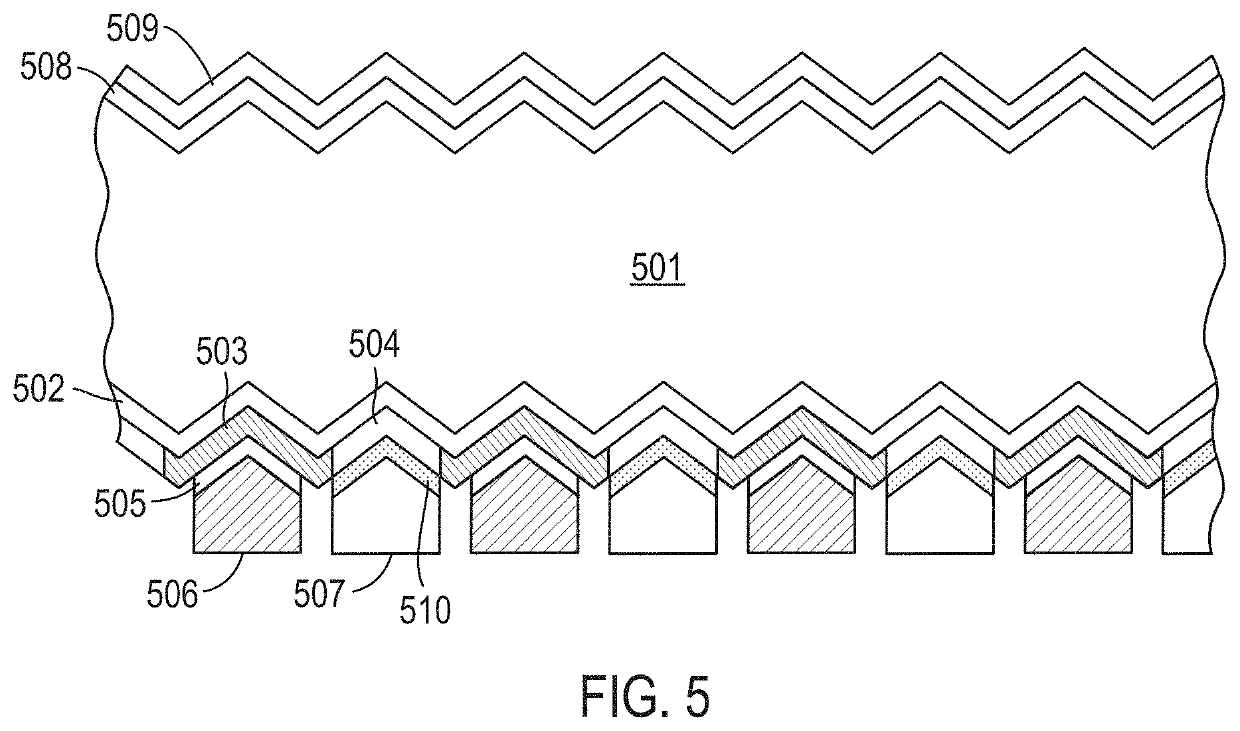Vanadium-containing electrodes and interconnects to transparent conductors
- Summary
- Abstract
- Description
- Claims
- Application Information
AI Technical Summary
Benefits of technology
Problems solved by technology
Method used
Image
Examples
example 1
[0229]Type A glass systems were prepared from the metal oxide compositions presented in FIG. 7.
[0230]Type B glass systems were prepared from the metal oxide compositions presented in FIG. 8.
[0231]Type C glass systems were prepared from the metal oxide compositions presented in FIG. 9.
[0232]The source of the metal oxides was Alfa Aesar: vanadium (V) oxide no. 44424, silver (II) oxide no. 40187, tellurium (IV) oxide no., 87813, lead (II) oxide no. 12220, phosphorous (V) oxide no 89966, lithium oxide no. 41832, and zinc oxide no. 87812.
[0233]The metal oxides were combined and heated to a temperature from 800° C. to 1,300° C. to melt the oxides. The glass was cooled to room temperature. The glass was then milled to provide a fine glass particle distribution. The glass system was characterized by an average particle size D50 of 2 μm as determined using a Mastersizer 3000 laser diffraction particle-size analyzer (Malvern Panalytical).
[0234]The glass transition t...
example 2
Metallization Paste Containing Vanadium-Based Glass System
[0236]Metallization pastes containing the glass system were prepared. The nominal content of the metallization pastes is shown in Table 1.
[0237]
TABLE 1Metallization paste.ContentMaterialProduct No.Source(wt %)Ag ParticlesAG-4-8Dowa Hightech90-99Glass SystemSee Example 1GF10.1-1.9BinderEthocel ®Dow Chemical0.05-10 Ethylcellulose STD4SolventGlycol etherDow Chemical 1-20Thixotropic AdditiveThixatrol ® STElementis Co.0.5DispersantDisperbyk ® 102BYK-chemie0.2
[0238]An organic binder, 1.0 wt % of Ethocel® ethylcellulose (STD4, Dow Chemical Company), was dissolved in 6.69 wt % of glycol ether at 60° C., and 89 wt % of spherical silver particles (AG-4-8, Dowa Hightech Co., Ltd.) having an average particle diameter (D50) of 2.0 μm, 2.5 wt % of a glass system of Example 1 having an average particle diameter (D50) of 1.0 μm, 0.4 wt % of a dispersant (Disperbyk® 102, BYK-Chemie), and 0.4 wt % of a thixotropic agent (Thixatrol® ST, Elemen...
PUM
| Property | Measurement | Unit |
|---|---|---|
| Temperature | aaaaa | aaaaa |
| Temperature | aaaaa | aaaaa |
| Thickness | aaaaa | aaaaa |
Abstract
Description
Claims
Application Information
 Login to View More
Login to View More - R&D Engineer
- R&D Manager
- IP Professional
- Industry Leading Data Capabilities
- Powerful AI technology
- Patent DNA Extraction
Browse by: Latest US Patents, China's latest patents, Technical Efficacy Thesaurus, Application Domain, Technology Topic, Popular Technical Reports.
© 2024 PatSnap. All rights reserved.Legal|Privacy policy|Modern Slavery Act Transparency Statement|Sitemap|About US| Contact US: help@patsnap.com










